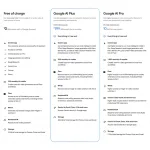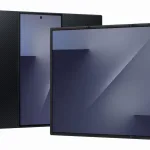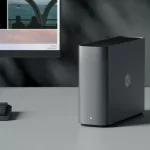
There’s a huge demand from consumers for affordable smartphones and though you’ll find many options in the sub-Rs. 15k price range, most devices sacrifice something or the other to keep the price under control. Things however, are different with the Moto G. Packed with features yet doesn’t cost much. But is it worth it? We take a look.
Design:

The Moto G has a simplistic feel to it. The phone is compact enough to fit in one hand (an unusual trait given the size of phones these days) and weighs 143g, which maybe on the heavier side but gives a good feel to it. As far as placements go, the front side is graced with the 4.5-inch HD display with the earpiece and 1.3MP camera while the right hand side boasts the power/lock key along with volume buttons. The bottom side features a microphone and USB 2.0 port whereas the top side has the 3.5mm headphone jack and second microphone. Back side has the 5MP camera with an LED flash and loudspeaker.

Motorola also allows users to customise the phone’s look with interchangeable back covers that are available in variety of colours.


Hardware and Performance:

Moto G features a 4.5-inch display IPS LCD that may look small by today’s smartphone standards but realistically, we loved the size and found it perfect for majority of our uses. The display has a 720p HD resolution that translates a pixel density of 326ppi that results in a crisp and sharp image and text quality.
On the processor and RAM front, the Moto G is powered by Qualcomm’s Snapdragon 400 1.2GHz quad-core processor and 1GB RAM. The adequate combination of the hardware and optimisation of the software makes it a breeze to use. The overall experience is smooth and lag free, which you don’t generally find in a mid-range device.
Software:

Our Moto G came with Android 4.3 out of the box but it prompted to update to the latest Android 4.4 KitKat update as soon as we turned on the device. Having the latest Android update in a mid-range phone is a big positive.
One of the reasons for this could be Motorola’s minimal customisation over the regular Android user interface. Moto G is as close as you’d want from a Nexus device but on a budget price. The few things that Motorola brings to the Moto G are apps like Motorola Migrate that enables users to seamlessly transfer their old data from Android or iPhone to the Moto G and Motorola Assist that automates some tasks. For instance, it can automatically put the ringer to silent at the preset time or activates hands-free while you’re in the car.
Moto G also supports the usual Google software enhancements, including Google Now.
Camera:

Moto G sports a 5MP camera that is capable of recording 720p content however, the quality is pretty mediocre. The camera supports burst shots and is capable of recording slow motion video.
Click here to check some sample shots clicked by Moto G.
Battery Life:

Motorola has a non-removable 2070mAh battery and although the rule of thumb is higher the battery capacity, longer it will last, Moto G proved us wrong with its stellar battery performance. The optimisation on Motorola’s part made the device last for around 1.5 days with moderate to heavy usage where even a high-end device like Galaxy S4 failed in a similar scenario.
Conclusion:
As we said at the start, there are a lot of options for consumers in the mid-range segment but Moto G is the first device we thoroughly enjoyed using. For a starting price of Rs. 12,500, there’s little to complain about the device. The only things that goes agianst the device are the camera and the limited storage with no option to expand. Motorola however, tries to compensate by giving 50GB of free Google Drive storage for two years.
The Indian variant sold exclusively by Flipkart also bundles a pair of earphones and AC charger that is absent from the international Moto G.
The 8GB Moto sells for Rs. 12,500 while the 16GB Moto G goes for Rs. 14,000.
Rating: ![]()
Pros: Performance, Price, Battery Life
Cons: Limited Storage, Camera





Leave a Reply